
Sometimes you need to cook way ahead of time, and learn how to keep food warm for hours before serving. You cannot predict when a huge joint of meat will be ready from your BBQ, so take heed of the following advice instead.
In this article, I outline some ways you can avoid making your guests wait for their supper, while at the same time ensuring you serve a hot meal.
The following scene has played out many times for me, and I’m sure it’s happened to many of you too.
Your guests are here. Drinks have been had. You have the dinner table set, and all the sides are ready.
You told your friends to be ready to eat around 5:30, but now it’s quarter past six, and the tribe is getting restless. “Another 15 minutes” you assuredly tell-all, but even you don’t believe yourself.
As the adage says, the problem when it comes to serving barbecue is “it’s done when it’s done.” A 10-pound pork butt might take 9 hours to cook, or it might take 13.
This makes planning a time to serve your guests difficult. Let’s fix this problem!
Jump to:
Time Your Cook to be Ready Hours Early, then Keep it Warm
Essentially what you want to do, is make your food WAY ahead of time, and then keep it warm for when they arrive.
As an example, a brisket can take anything from 12 to 16 hours to cook, so set aside 18 hours to cook and rest it.
This way, if it takes the full 16 hours, you can rest it for 2 and serve. If it finishes in 12, you can rest and then keep it warm for 6 hours.
Problems arise when you start your cook 14 hours before guests arrive, and unbeknownst to you — because we cannot reliably estimate these things — the particular brisket you have requires 16 hours to cook.
In this scenario, you would have to serve it 2 hours late, and that’s without any resting time, reducing the quality of your meat.
Alternatively, you could cook your meats a day or more before, and then reheat on the day?
We have guides on how to best reheat brisket, and how to reheat pulled pork. But honestly, although still damn good, it’s not as good as fresh cooked on the day now, is it?
Keeping Meat Warm for Hours Isn’t Easy — But It’s Possible
Keeping your meat warm for anything up to 6 hours isn’t easy.
The main danger you face is your food drying out, becoming tough, and hence being of severely lower quality compared to when you’d finished cooking it, and it was initially ready to eat.
But fear not, we have solutions!
Following are recommendations on how to keep your meat warm for hours on end, without sacrificing quality. Some professional solutions may be quite costly. However, we’ve something economical for everybody too.
Commercial Food Warmer
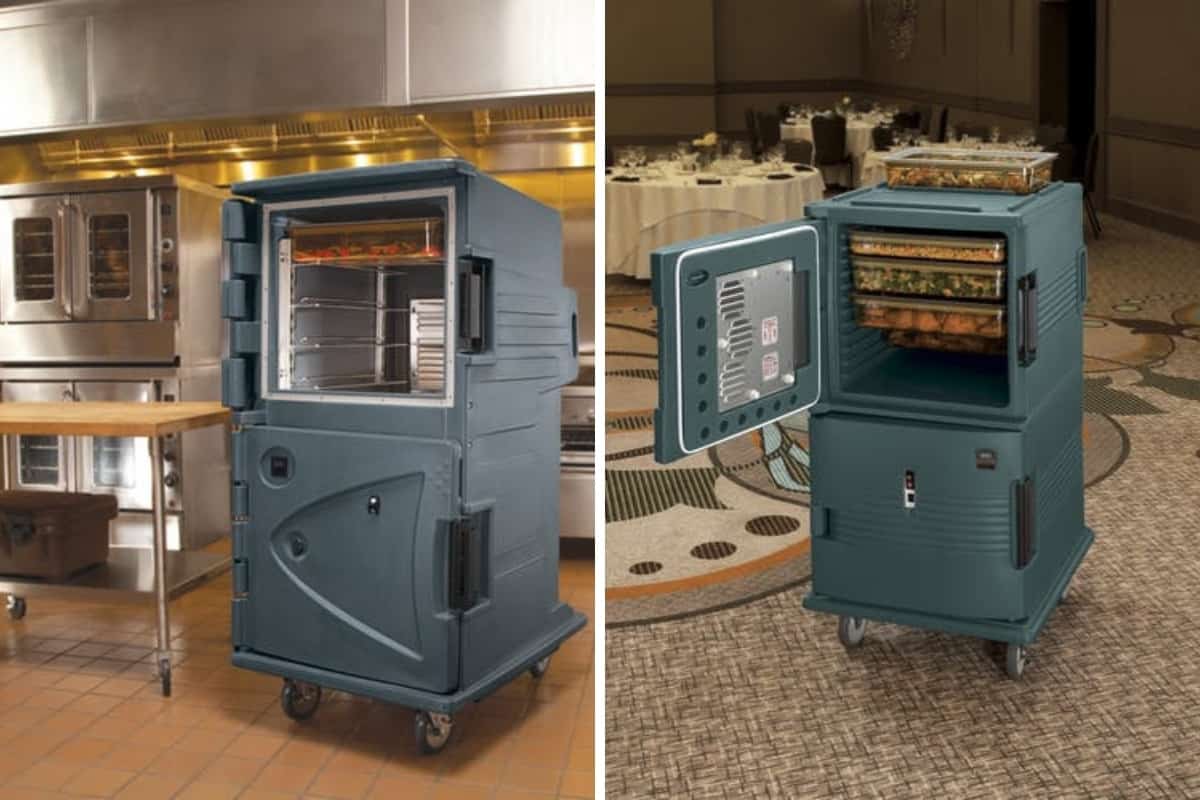
Restaurants and professional caterers need to be able to keep food hot, especially if the food they’re cooking needs to be prepared for some time before they expect it to be served — i.e., cooked in one location and transported to another to be served.
The reason for this is two-fold, obviously, they need to be able to serve hot food, and they need to keep food out of the “danger zone” between 40 °F – 140 °F. At this temperature bacteria can multiply, doubling in as little as 20 minutes.
While there are many options for commercial warmers, the most popular would be the Insulated Food Transport Carriers made by Cambro.
Available in both electric and non-electric models, they’re able to keep food above 150 °F for up to 4 hours in the non-electric models; longer in electric models.
While these units are indeed costly and impractical for the home cook, you can find them used on sites like eBay and Craigslist.
Pros
Easy to use and can keep temps for hours.
Frequently these devices are meant to be portable to accommodate caterers. That means they’re great if you want to cook at your house, then transport the meat to your final destination and still have it be piping hot when you dig in.
Cons
As mentioned, these devices run into the thousands of dollars brand-new and aren’t necessarily easy to come by second hand.
Hold at a Low Temp in the Oven
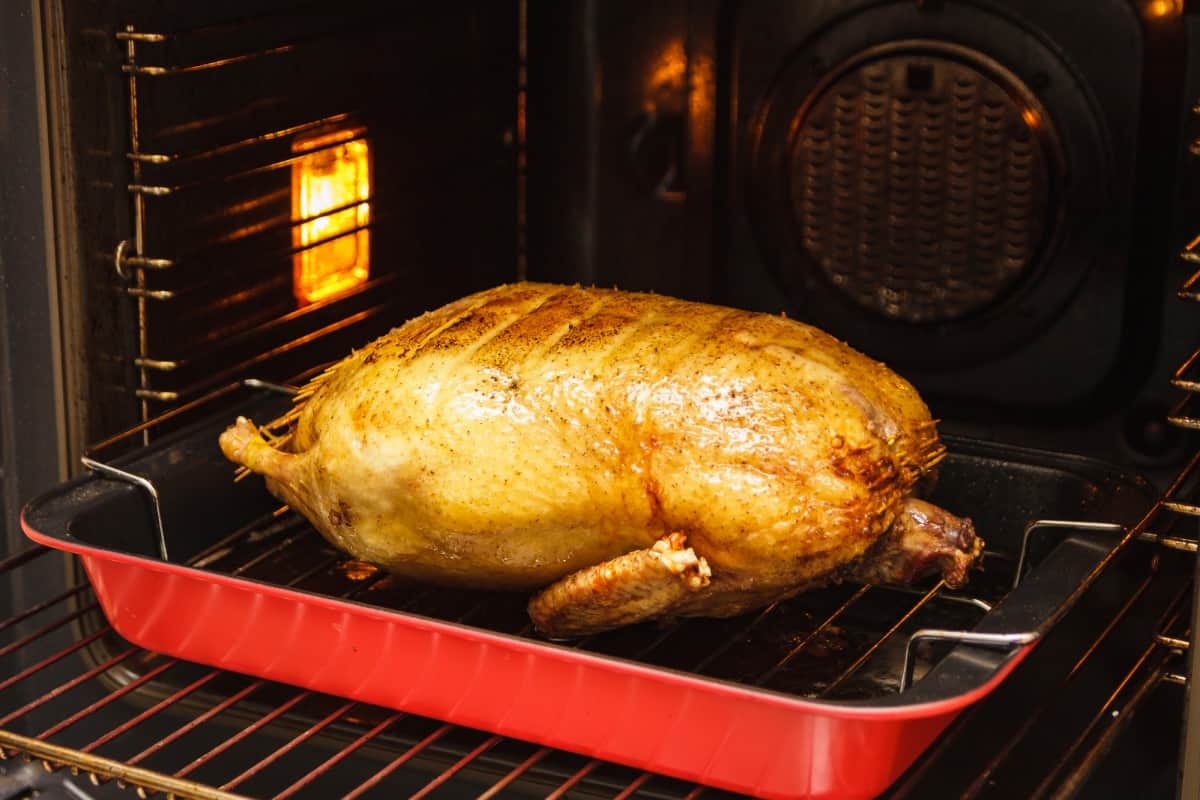
While not ideal, many dishes can be kept warm in the oven. According to Alice Henneman, MS, RDN with the University of Nebraska-Lincoln, you can keep foods hot in a preheated oven set to 200 °F – 250 °F.
Personally, I prefer between 160 °F and 170 °F as an oven temperature to keep food warm. This is way above required food safety levels, yet isn’t so high that it keeps the food cooking.
If you’re going to be keeping your food hot for an extended period, check your food frequently to make sure it stays above 140 °F. If your food is getting too hot and is at risk of drying out you can turn your oven off for a period of time and then turn it back on; your food will stay hot while the oven is turned off due to residual heat in the oven.
I find this method works best for something like pulled pork. Remove your pork shoulder and let it rest before pulling then placing in a covered roasting pan with a little braising liquid — i.e., the dripping’s reserved from the meat, and place in your preheated oven.
Pros
Since almost anyone would have an oven and a roasting pan in their home, this is a great standby when you don’t have a better option available to you.
Cons
The most obvious con is this method will continue to cook your food as it hot holds. A no-go for foods like steaks, chicken, and brisket that will dry out and become tough. Pork though is far more forgiving.
How to Keep Food Warm in a Faux Cambro
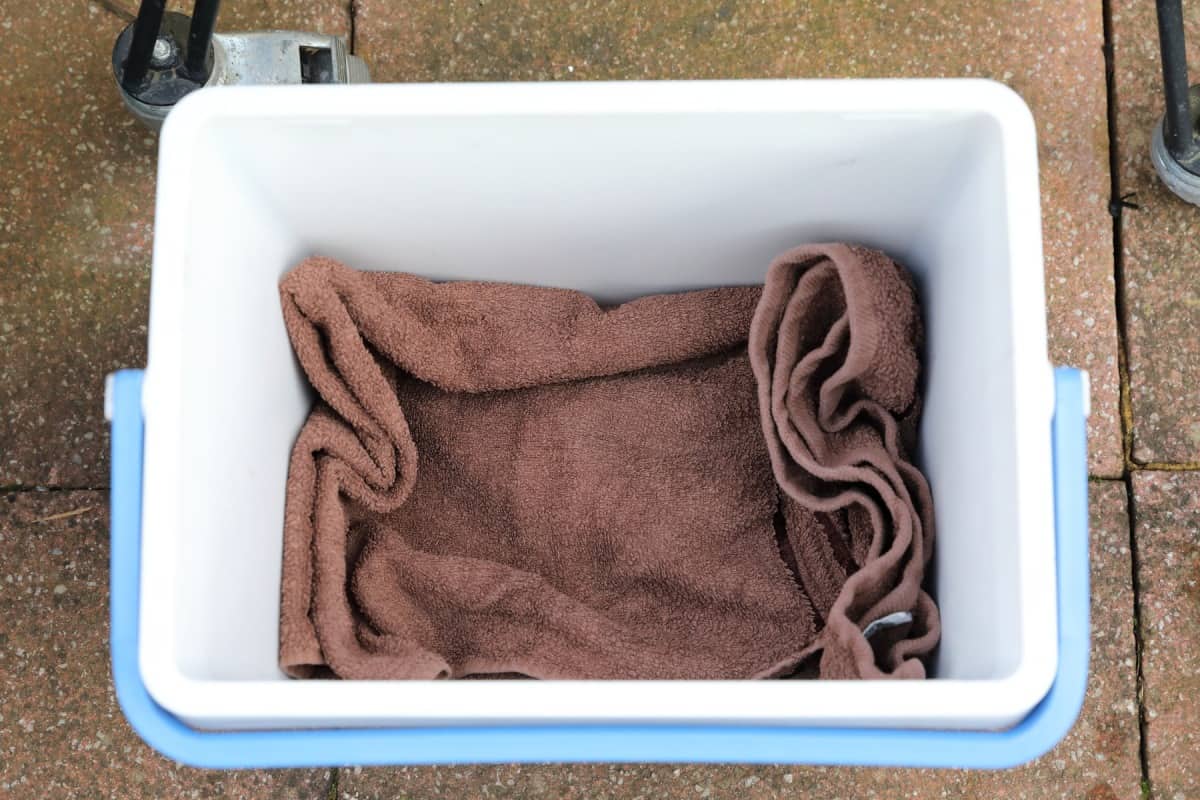
This method, made famous by Meathead from AmazingRibs.com, involves utilizing a standard, highly affordable cooler to mimic an expensive commercial food warmer — i.e., a Cambro.
Coolers are highly thermally insulated, the very property they are designed for to keep things inside cool. However, this property also works the same for keeping warm, hot foods placed inside.
A cooler is actually good at maintaining ANY stable temperature inside, be that cold or hot. And this is what makes them so great at keeping food warm for hours.
How to Keep Food Warm in a Cooler — The Method:
In order to use the ‘faux Cambro method’, you need a few items: An insulated cooler, some tin foil and two or more towels.
Shortly before your meat is cooked, add a couple of gallons of hot tap water to the empty cooler. Close the lid for at least 30 minutes, then ditch the water. This preheats the cooler; it brings it up to a good warm temperature ready to receive hot food. Without this step, the food you place inside would initially lose some heat bringing the cooler up to temp.
Next, remove your meat from the cooker and wrap it tightly in aluminum foil, if not already done.
Now place a clean towel or two in your cooler, place your wrapped meat on top of the towels, and place a couple more towels on top and close the lid.
Your meat will stay hot for hours using this method.
I’ve taken pork shoulders out of the tinfoil after being in the “faux Cambro” for 4.5 hours, to still see steam rising off the meat it’s that hot!
Pros
Have a cooler? Towels? Access to hot water? Good, you have all the tools necessary to build a faux Cambro.
Cons
Will not work indefinitely. Eventually, your food will reach the danger zone.
You COULD Bail Out of Low n Slow: Just Cook Fresh, Serve Hot
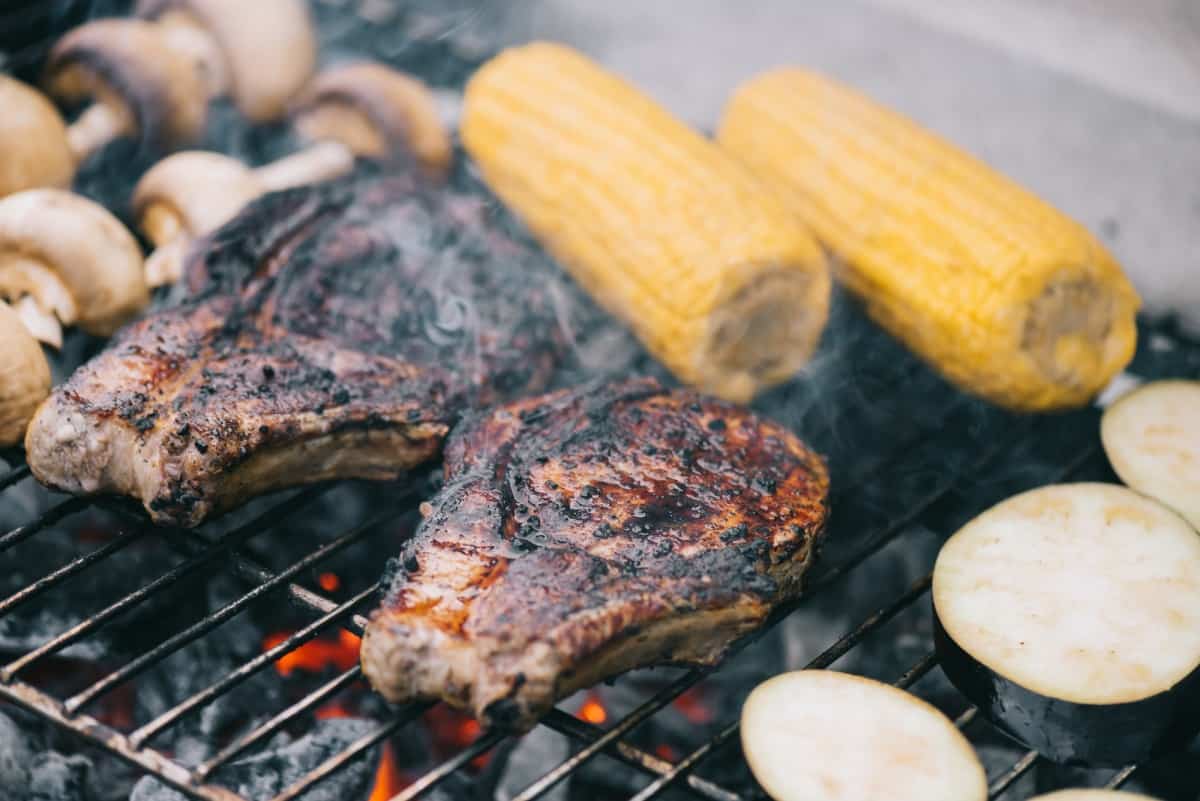
This isn’t a joke. Lots of times I’m asked what I would do if I had many people coming to my home for a good BBQ?
I would mostly steer clear of unpredictable cuts of meat like pulled pork and brisket and instead opt to grill steaks, chops, even hot dogs, and hamburgers.
How would I serve 20+ people and not serve them cold food? Easy, I’d serve it right off the grill.
Before your guests arrive, have all your sides ready. Have your salads made and in the fridge. Have anything like mashed potatoes or glazed carrots in the oven or on the stove, and ready to eat. Have your meat seasoned and ready to cook and your grill hot and ready.
Then all you have left to do is grill these quick-cooking cuts of meat and serve it as your guests take their seats.
Pros
Obviously, the most significant advantage to cooking fresh is that all of your guests will be able to enjoy their food hot, while it’s at its ideal stage. As an added benefit, your guests can enjoy the show as you effortlessly cook them their dinner.
Cons
This isn’t an option for something that is going to take hours to cook — i.e., brisket, but it will work for foods that can cook in 20 minutes or less like steaks, chops, hamburgers and hot dogs.
You’re not going to be able to enjoy the beginning of the party because you’re going to be busy cooking.
Conclusion
How do you keep your food warm? Have you ever been in a jam and had to come up with your own way to keep your food from going cold? Did you use a method similar to one of the ones listed above? Do you think it worked better than our methods?
Leave us a comment below telling us all about it, so we can all learn from each other.
Happy grilling!


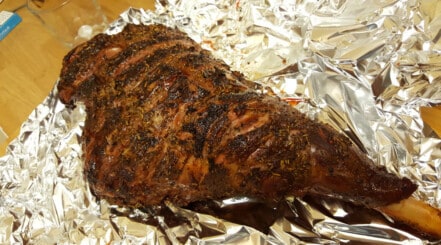
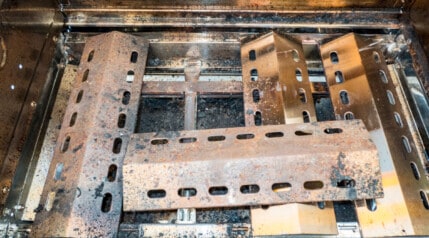

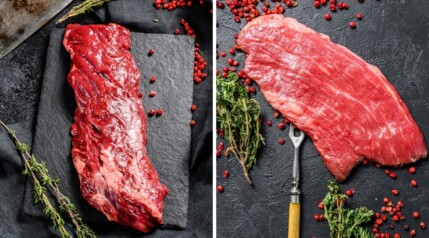
Loving the faux Cambro idea. I need to cook some brisket at home this Saturday, that I want to take to my brother’s, who is a 5-hour drive away. Do you think the brisket will stay warm enough for that? Thanks, in advance.
Hi Ben.
I wouldn’t like to personally guarantee it, as there are many variables. How big your brisket is, how good the insulation of your cooler is, the weather and temperature outside, etc. Personally, I would be happy to do so and am pretty sure it will still be warm and not have dropped into the ‘food safety danger zone’ in that time, but mileage may vary.
If you follow the process to the letter, yes. By which I mean: Have the cooler full of HOT water, to preheat it and hence take less heat away from the meat. And once the meat is off the grill, wrap it in foil, wrap it in towels, put in the cooler, and then set off on your journey. You want to be ready to go as soon as the meat as ready. This will give you the best chance.
Have you considered coking, sealing and reheating? It may not be QUITE as good, but you can at least be sure it’s safe? Cook your brisket a day early, portion it off and seal it with a vacuum sealer, or watertight zip lock bags, and put in the fridge. In each, put a bit of the cooking juices from the pink butcher paper or foil if you wrapped, perhaps a small (couple of Tbsp) bit of beef broth if you have no juices. Transport chilled in a cooler packed with some ice.
At the other end, reheat in a sous vide manner. If you have no sous vide equipment, I assume you have thermometers (every grill enthusiast does), you can just reheat sous vide in any big enough container on the stove, keeping the water at the right temp by controlling the gas / electric and measuring the water with your thermometer. Aim for 60c / 140f water temp, and cook until the brisket is that temp throughout. It will take a few hours, so prepare for that.
Mark.
What would you suggest to keep 3 whole chickens warm for about 4 hours? I don’t want them to dry out!
Hi, Dena. In my experience, whatever method you choose for anything over 2 hours, the chicken will dry out I’m afraid, particularly the breast. The thighs and wings have connective tissues and a higher fat content that renders down, making them way more forgiving, but the breast just will dry out. I would try to avoid holding chicken that long!
As an example, have you ever bought a pre-cooked rotisserie chicken from a supermarket, brought it home, held it, reheated it etc.? they are almost always a bit dry because they are just hard to hold. Sorry.
Hi,
For the Faux Cambro method, instead of using my cooler, couldn’t I just get my oven warm, then turn it off, and wrap my meat like it’s going into a cooler, and let it rest in warmed oven? Would it stay warm that way, as ovens have some insulation to keep the heat trapped in?
Thanks,
Jimmy
Hi Jimmy,
In theory, sure, this MIGHT work. I do have two issues with it though:
First is that some ovens only go as low as 90 / 195f (maybe 80?) and at this temperature it would actually carry on cooking somewhat if it holds this temperature for any length of time, potentially taking your cook past the perfect doneness that you strived for in your cook.
Secondly, my oven tends to cool down relatively quickly when turned off to be honest. I mean, it’s far from instant, but certainly way more heat is escaping when compared to a sealed cooler. So I don’t think it would be as effective as the faux Cambro method. It would be better than keeping your meat wrapped on the side and placed in nothing, but I’m certain the faux Cambro would hold it warmer for longer. You could mess around firing up your oven on a very low heat for a few minutes every half hour or so, but really it would just be easier to use a faux Cambro and be completely hands-off
What do you think is best for 2 buts, 5 pounds each, that are done after 16 hours of smoke and PERFECT, but won’t be served for 10 hours?
Hi Chris,
10 hours? That’s too long to ‘hold’ without applying additional heat, which will cook it further. SO for me, it being pulled pork, I would pull it, add whatever sauce or liquid I was going to, portion it off into airtight sealable bags, and then refrigerate. When it’s time to serve, I would then reheat sous vide / in a pan water. Pork butt is very forgiving to this kind of treatment, and there will be no discernible quality loss, mostly due to the high fat content and added liquids at pulling time keeping it very moist.
I just need one hour to keep burgers warm. What do you feel is the best method?
Hi, Judi,
What’s the exact situation? Are you outside with a grill, inside with an oven etc.? Usually, because burgers are so quick to grill, you would just cook them as needed, or cook up a few and keep them on a warming rack on your grill, or in an indirect zone away from the heat source, or a cooler section if using a griddle. You could wrap them a few piled together in tin foil and keep them somewhere hot (again, requiring a grill, or cooler section of a griddle). But as they are generally speaking so small and thin, they are hard to keep warm for any length of time.
Here is what I want to do, but I am not sure if it’s ok? I routinely cook brisket and pork shoulder, then when done I leave it in the butcher paper, then wrap it in cellophane, so it won’t leak, then wrap it in aluminum foil, then wrap in towels and put it in a cooler. This works for a good 4 to 5 hours. But what I would like to do, is once I pull the meat, wrap it the same way in cellophane and aluminum foil, and then vacuum seal the bag and put the meat in a sous vide set to 170 degrees, then hold for 6 hours. I figure that the meat is cooked to 200 degrees and the sous vide is 170. So the meat won’t cook anymore, but its temp will drop slower, and never get below 170. Does this sound like a viable option?
Hi Kevin,
It’s viable, you can certainly do this, but it will continue to cook in the sous vide, just very slowly is all. What effect it would have after 6 hours sous vide at that temp I cannot say, but it will continue to cook.
I have an electronic smoker, and it works great for me. You just set the temp above 140 °F and you’re done
That works 🙂
Hi, the cooler method sounds like a great idea. Wondered if this method would also work to keep potatoes (mashed and roasted) warm for 3 to 4 hours, so I can avoid that last minute rush for a Christmas dinner? Thanks
Hi Val,
I’ve honestly never tried, but thinking logically I would say it’s going to work to some degree. However, I would think that the ‘thermal mass’ would be so much lower in potatoes when compared to large cuts of meat, that the potatoes would cool quite quickly and not stay warm for 3 to 4 hours.
Best way to hold mashed potatoes is to keep them in the pot and place that pot in another pot with simmering water, very much like a double boiler method.. just be sure to keep the potatoes covered and stir them every 45 minutes or so
Hi Mark. How would you recommend I cook and transport chicken breast to a dinner party. I expect the breasts need to be kept warm for up to 2 hours without drying them out? Thanks.
Valerie
Hi, Valerie. Sorry for the very delayed reply, I was traveling over Christmas and unable to check and reply to comments.
I honestly don’t see a good way of holding chicken breasts for 2 hours without at least some loss of quality. Because they are so small, they don’t hold much heat and hence cool quickly and need an external heat source to keep them in the safe zone above 140f where bacteria grow, so they will continue to cook I’m afraid.
So if keeping warm, the best bet is likely to transport them in warm water, always making sure to keep them above 140 F, as going below puts it into the danger zone of bacteria growth. So advice would be to keep them in warm water at 150 F, and have some even hotter water (near boiling) to top up the water in the cooler at intervals if the water starts nearing 140f, to make sure it doesn’t go below.
But honestly, I don’t like this idea as the breasts WILL continue to cook. Better would probably be to allow them to cool, vacuum seal, and then reheat sous vide when they are needed.
It’s a bit of a tricky one.
Thanks for the tips. I’m curious if using the warm setting on a slow cooker would also work?
I don’t see any reason why not. It’s all about keeping food out of the temperature danger zone and doesn’t really matter on the heat source (as long as you are mindful of not cooking it further too much, or drying it out.)
Do you have any tips on how to keep food warm when served at a “sit down” dinner? As soon as it is placed on the table it starts cooling and can be down right cold by the time everyone has served themselves. Help!
You can warm the dishes, bowls, and plates you are using for serving in an oven, and keep them wrapped in foil until the absolute last minute.
Other than that, the only thing you can do is buy dedicated food warmers of some description. Some are electric, some run from alcohol stoves (chafing dishes), some run on heat from candles (not very good, to be honest.)
But there’s no magic solution, I’m afraid.
Love the chilly bin as a heat box.
ADD in a Hot Water bottle, after the hot water pre heat.
Towels in first, then hot water bottle, Or even a container of hot water with lid, then the hot food, top Towels and close the lid.
It’s worked for me a few times…
Go WELL there.
From Chch, New Zealand.
Mark, wonderful post and thank you for answering questions! Quick question: have a backwoods smoker that isn’t huge so I need to cook a 13 pound pork butt the night before and then take out and put some racks of spare ribs in for their smoke. If my pork butt sits in the Faux Cambro (done as you’ve described) for 5 hours, is that too long? Or should I just get a much smaller pork butt and have it complete roughly the same time as the ribs? Bottom line: the 13 lb pork butt is a wonderful cut of meat but I think it might be “a smoke too far”…..
Hi, Matthew.
In your situation I would cook the pork butt, then use the faux cambro with a leave in thermometer inserted to monitor the internal temperature. If it cools too much, place it in a warm oven between 160 and 170 degrees Fahrenheit to hold it at a safe food temp until ready to serve. Pork butt is very fatty, and can stand up to this treatment, it’ll be fine.
Alternatively, cook the pork butt a day or two before. Pull it, mix with your sauce etc., then vacuum seal it and reheat on the day. I do this all the time. Wood pellets and charcoal are quite expensive, so when I smoke I try to load up my smoker, and then vacuum pack and seal portioned off food for later reheating. This is fine with pulled pork, ribs, etc. Not so much brisket that can dry out easily.
I’ve been dealing with this dilemma for years and have done one version or another depending on the meat. My question is this, is there a specific temperature let’s say for chicken that is above 140 that will not continue cooking the meat? or will as low as 140 still continue to cook the meat?
Hi Greg. Cooking is a function of time and temperature. You can (mostly) achieve similar results with a high temp for a short time, or a low temp for a long time. It’s what sous vide is based on (low temp for a long time). So unfortunately, no matter temp you hold at, some further cooking will occur.
Hey there! I found this article while researching a food issue for my daughter’s wedding. They want Hibachi food served at a reception. The restaurant they love is 1.5 hours away from the venue. Their wedding is at 3:30 with dinner served closer to 5pm. I don’t know we are going to keep hibachi (small bites of chicken and steak as well as a tray of vegetables and rice) from getting cold or losing the food quality. Any suggestions appreciated!
Seriously worried, Sylvia
Hi Sylvia,
I would say keeping hibachi warm for 1.5 hours is going to lose quality as the pieces are so small, and prone to drying out to be fair. I don’t think it’s worth the risk for a wedding dinner, personally 🙁
When sausage gravy is made in large electric skillet, what is the best temperature for holding it to keep it warm and every hour bring back to 140 degrees and then back off to warm again for a 4 hour period. I need to know the holding temperature.
Hi DJ. The same rules apply for gravy as for anything else. But I wouldn’t hold a gravy unless it’s constantly being used, because it’s so quick and easy to simply reheat as and when needed.
I just finished smoking 2 pork butts, but my party isn’t for another 10 hours. I’m not too savvy with the souis vide method. What’s the best way to keep warm?
Wrapped airtight and placed into a very low oven works well. Have to be sure it’s not too hot though, as some ovens only go down to 170 degrees, whereas others can go as low as 150 degrees.
Came to pick up tips for keeping meats warm, and was successful, thank you!
Since you say you have multiple grills & favor fire cooking, could I share a memory of my dad, who was obsessed with grilling so much.. once, he had gotten a spectacular steak deal and during the cooking, it began to rain, so rather than abandon the grill, he ran inside and took my mom’s prized brocade shower curtain, created a tent with it using our clothesline, and finished the steaks underneath it…
My mom never could get the smell out of the curtain despite several cleaning methods…
Hi Mark – Timing Thanksgiving dinner is always a bit chaotic and I’ll be prepping and/or cooking sides a day or more beforehand. I’m planning on sealing sides (sprouts, carrots, mashed potatoes – possibly more) for sous vide and immersing in the bath, 165 degrees, an hour before turkey is ready for the table. Thoughts? Temp?
Hi Bob. Sounds like a good plan. I’m afraid don’t tend to do much sous vide, so the timings are far from embedded in my brain just yet and soI’m unsure without doing some research. Any time I do use sous vide, I just do a quick google for what I’m trying to cook or warm through, and there is tons of advice to follow out there for literally everything. So I would recommend just doing a google search for the ingredient you are trying to warm through, and what time and temp. You should be able to easily to find the answer.
I hope it all goes well, best of luck!